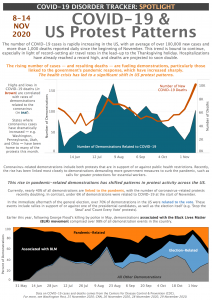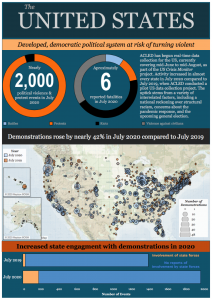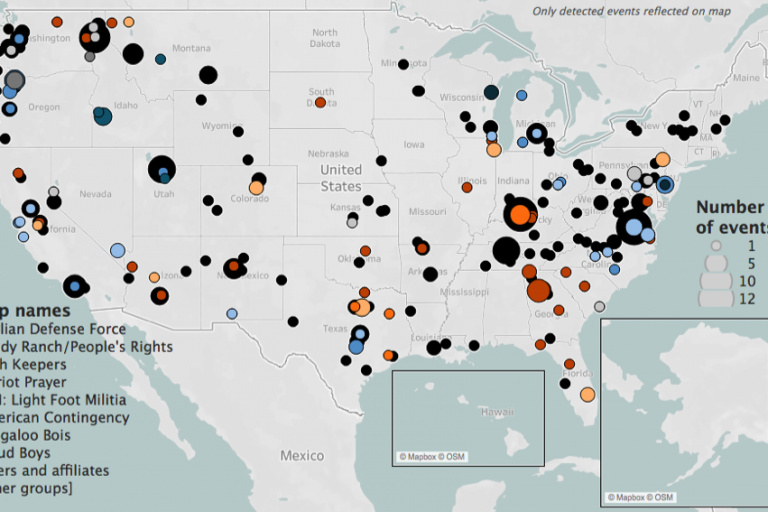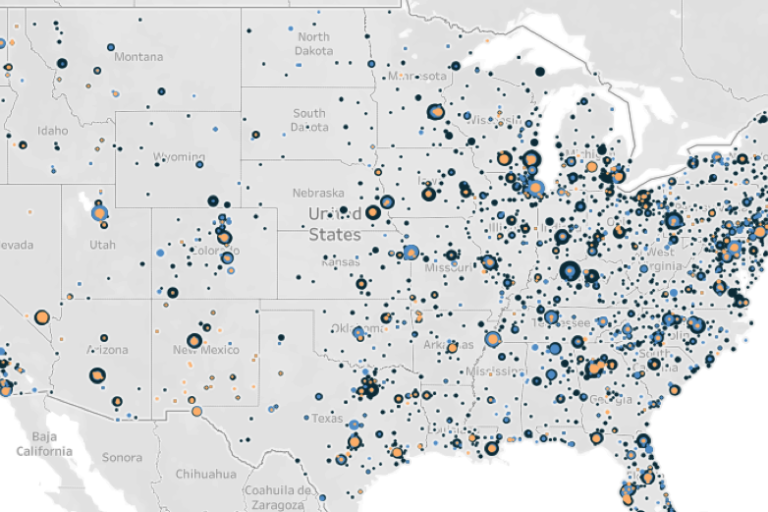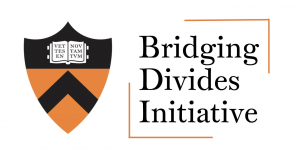The US Crisis Monitor was first established in 2020 as a joint project with Princeton University’s Bridging Divides Initiative (BDI), a non-partisan research initiative that tracks and mitigates political violence in the United States. The current 2024 US Crisis Monitor is an independent ACLED project. ACLED and BDI remain data-sharing partners, collaborating on critical efforts to monitor political violence trends around the country. For more on BDI’s work to deliver action-oriented research, create space for cross-sector collaboration, and build frameworks for effective policy response in the United States, visit the BDI website.
Who are ACLED and BDI?
The Armed Conflict Location & Event Data Project (ACLED) is a disaggregated data collection, analysis, and crisis mapping project. ACLED collects the dates, actors, locations, fatalities, and modalities of all reported political violence and demonstration events across much of the world (including Africa; the Middle East; South, Southeast, East, and Central Asia; the Caucasus; Southeastern and Eastern Europe and the Balkans; and Latin America and the Caribbean — with expansions to remaining regions underway). ACLED’s global team conducts analysis to describe, explore, and test risk scenarios, and makes both data and analysis open for free use by the public, with data updated on a weekly basis. While ACLED is a fully remote organization with team members based around the world, it is a registered non-profit organization with 501(c)(3) status in the United States.
The Bridging Divides Initiative (BDI) at the Liechtenstein Institute on Self-Determination at Princeton University’s School for Public and International Affairs works to support local community resilience in the United States, building on expertise from political and elections work around the world. BDI uses different tools and methodologies to track demonstrations and political violence in real time so that local communities and national organizations will be better able to address issues before they escalate. BDI works to build an expansive picture of peacebuilding and reconciliation organizations across the country, to highlight existing work while developing new avenues for coordination and support. BDI has an immediate focus of mitigating political violence in the US by supporting a more coordinated response around the 2020 election, while ultimately supporting longer-term solutions to societal polarization.
The US Crisis Monitor is a joint project of ACLED and BDI. Through this project, ACLED is able to extend its global methodology to conduct data collection for the US, making real-time data available for public use, while BDI is able to use these data to identify emerging risks and to inform and motivate policy and programming discussions within its civil society network.
ACLED and BDI are both independent and non-partisan, and the US Crisis Monitor is dedicated to providing objective information. The US Crisis Monitor is guided by the belief that transparent, independent, credible data on political violence and demonstrations can improve decision-making and policies, enhance peacebuilding, and ultimately facilitate efforts to track, prevent, and mitigate violence. For these reasons, we are committed to making all data, analysis, methodology, tools, and resources publicly available. At the same time, we recognize that data, statistics, and analysis can be misinterpreted and manipulated towards political or other ends, in turn fueling conflict, harmful or incorrect narratives, and even violence. The US Crisis Monitor takes these risks extremely seriously and will work to ensure that materials made available through the project do no harm (insofar as it is within our power to control), and that principles and approaches of conflict sensitivity are adhered to strictly.
For more information about our do no harm and conflict sensitivity policies, please contact us at [email protected].
Why US 'Crisis' Monitor?
This name was chosen following careful and extended deliberation. The use of the word ‘crisis’ is a description of the project’s goal: to provide the public with real-time data and analysis on political violence and demonstrations across the US, in order to monitor emerging crises. The name emphasizes the latent risks present in the US, particularly during contentious political contexts such as election periods, and identifies the project as a tool for mapping these risks as they develop.
Why are we monitoring the US?
The US is at heightened risk of political violence and instability going into the 2020 general election, as evidenced by increased political polarization, violent hate crimes, and large-scale social movements. In the short term, political violence can erode the space available for compromise and civil discourse that is necessary for policymaking and reform. In the long term, it can undermine community building and core democratic institutions. Despite clear risk indicators, there are no initiatives collecting comprehensive data on both political violence and demonstrations, and violence prevention efforts remain dangerously siloed.
To address these challenges, the US Crisis Monitor aims to provide the public with real-time data and analysis on demonstrations and political violence across the country, as well as to establish an evidence base from which to identify risks, hotspots, and available resources to empower local communities in times of crisis.
What information is captured?
ACLED systematically collects the dates, actors, locations, fatalities, and types of all political violence and demonstration events in the US using a methodology consistent with our global coverage of conflict and disorder around the world. ACLED also collects information on specific, contextually-relevant strategic developments that offer further insight into the political environment; these may be precursors to changes in patterns of political violence and demonstrations.
ACLED does not record all instances of violence. For example, criminal violence, defined as violence that is motivated by personal or purely criminal motives, is excluded from the ACLED dataset. Some mass shooting events fall into this category. Violence that takes place in the private sphere, such as domestic or interpersonal violence, is also not recorded in the ACLED dataset, even when these events could have wider repercussions among the public. Similarly, events that are categorized as standard police enforcement are excluded from ACLED’s coverage. These typically include incidents where law enforcement agencies appear to have used violence within the bounds of the legal constraints on their activity, either in reaction to an attempt on the life of a police officer or otherwise in the presence of a threat. Finally, ACLED only captures events that are reported to have actually occurred. As such, ACLED Researchers do not record threats of violence or intimidation. Non-physical violence, such as online or cyber-violence, is also outside of the scope of ACLED’s data capture and mandate.
Please note: ACLED does not collect ‘big data’ or personally identifiable information about individual participants in any of the events that fall within our catchment. Data collection is specifically restricted to the dates, groups, locations, fatalities, and types of political violence and demonstration events.
For more information about our do no harm and conflict sensitivity policies, please contact us at [email protected].
How are 'political violence' and 'demonstration' events defined?
ACLED defines political violence as the use of force by a group with a political purpose or motivation. ACLED records political violence through its constituent events, the intent of which is to produce a comprehensive overview of all forms of political disorder, expressed through violence and demonstrations, within and across states. A politically violent event is a single altercation where force is used by one or more groups toward a political end. ACLED employs this definition of political violence in every country we cover. It is a core component of the established global methodology.
In addition to political violence events, ACLED also codes both non-violent and violent demonstration events. Demonstrations include events coded with ‘Event Type’ Protests, which in turn encompasses three specific sub-types that appear as ‘Sub-event Types’ in the data: Peaceful protest, Protest with intervention, and Excessive force against protesters. Events coded with ‘Event Type’ Riots include sub-event type Violent demonstration.
ACLED codes all physical congregations of three or more people (single-person demonstrations are not coded) as a demonstration when they are directed against a political entity, government institution, policy, group or individual, tradition or event, businesses, or other private institutions. This includes demonstrations affiliated with an organization (e.g. NAACP), a movement (e.g. Black Lives Matter), or a political party (e.g. Republicans), as well as those affiliated with identity groups (e.g. LGBT, women, Native Americans). Whenever such salient identities exist, they will be coded as an ‘Associated Actor’ to the respective primary actor (for more on coding decisions, see the ACLED Codebook). In addition, ACLED also codes demonstrations around a certain topic, even if not associated with a specific identity group or organization (e.g. against climate change, anti-vaxxers, COVID-19 restrictions, etc.).
Given the above-outlined definition, political or party rallies, town hall meetings, and caucuses are not coded as ‘demonstrations’ by ACLED, as they reflect regular political activity by members of political organizations, civil society, and the general public. ACLED covers the occurrence of events, not the absence of action; this means that physical congregations of people are coded, while a labor strike where workers stay at home is not (though significantly large strikes would be captured by ACLED as ‘Strategic developments’). Symbolic public acts are also not coded as ‘demonstrations’ — such as displays of flags, putting up a sign in one’s yard, written chalk messages on sidewalks, a congressional walkout, etc. Additionally, vigils that are not intended to manifest any protest message also do not fulfill ACLED’s requirements for inclusion.
For more on ACLED terminology, see the ACLED Codebook.
Access the complete list of US Crisis Monitor FAQs as well as our full US methodology brief.
- Overview of ACLED data and analysis
- Explanation of ACLED’s core methodology
ACLED Methodology: Disorder in the US
- Explanation of ACLED’s US-specific coding decisions
- Report on ACLED’s 2019 US pilot project
Terms of Use & Attribution Policy
- Guidelines for using and citing ACLED data and analysis
Data
All data on political violence, demonstrations, and strategic developments in the United States are available for download below. For weekly real-time updates, access the data through the ACLED export tool, curated files, global dashboard, or API.
Regional Overviews
Featured Analysis
Dashboard
The US Crisis Monitor dashboard mapped the latest data on political violence, demonstrations, and strategic developments and allowed users to track additional trends to watch including: the use of state force against demonstrators, state targeting of journalists, counter-protests, car-ramming attacks targeting demonstrators, the presence of armed individuals at demonstrations, events related to the COVID-19 pandemic, and post-election demonstrations associated with the ‘Count Every Vote’ and ‘Stop the Steal’ movements.


